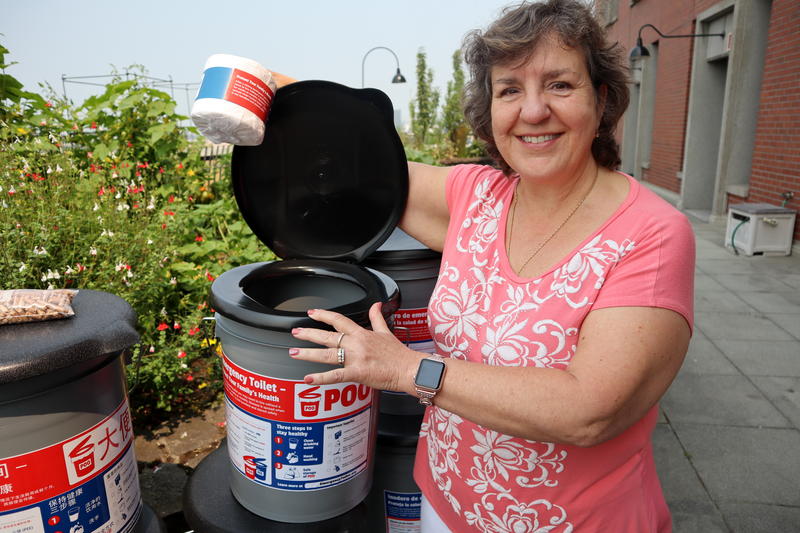
Have You Planned For Number Two After ‘The Big One’?
Listen
Horror tales from recent earthquakes overseas are moving people in Seattle, Portland and along the Pacific Northwest coast to give a crap about where to crap after a major earthquake.
It’s not something we typically discuss in polite company, but disaster planners say that when water and sewage service fails, finding a place to poop is a big deal.
Experts from Japan told a well-attended earthquake symposium in Seattle earlier this year that lack of working toilets was one of the nation’s most urgent problems after its great quake and tsunami in 2011.
“Women, the elderly and others were afraid to go outside in the dark to poo,” said Atsushi Kato, executive director of Japan Toilet Lab. “So they stopped eating and drinking.”
In greater Portland, five counties are rolling out a public education campaign called the Emergency Toilet Project. This project was inspired by the two earthquakes that devastated Christchurch, New Zealand in 2010-2011.
“They lost their sewer system, their sanitation system, 95 percent of it was out,” said Sue Mohnkern, emergency preparedness program supervisor at Washington County Public Health in Hillsboro, Oregon. “It was only a year or two ago that they got it all back online.”
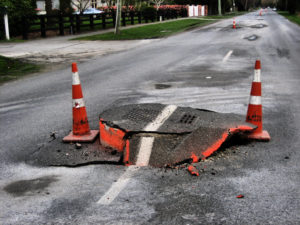
Soil liquefaction caused extensive damage to water and sewer lines in the 2010-11 Canterbury earthquakes in New Zealand. CREDIT: MARTIN LUFT
Mohnkern said she looked around for how she could potty-train folks in the Portland area to get ready for this aspect of the Big One, the feared Cascadia Subduction Zone quake. And she couldn’t find much guidance.
“The average person poops about half a pound a day — not something I knew before I got into this particular project,” Mohnkern noted in an interview. “Half a pound a day times 2.4 million people per day is a lot of poop that’s not going anywhere when our sewer systems are broken. So we had to resolve this. We don’t want cholera, typhoid, hepatitis A and diarrheal illnesses to come back and be the catastrophe after the catastrophe.”
Mohnkern enlisted a five county disaster preparedness consortium that covers greater Portland and southwest Washington, officially known as the Regional Disaster Preparedness Organization (RDPO). RDPO opened the tap for federal Department of Homeland Security planning money. The Emergency Toilet Project committee ended up refining some ideas from New Zealand and from a local Portland nonprofit called PHLUSH.
Bottom line: You’ll want to add an emergency toilet to your disaster kit. One of the first places the carefully-polished message debuted was at a Sunday Parkways bicycle festival in Northeast Portland in mid-August.
“It’s something that people have not thought about,” said Argay-Parkrose Neighborhood Emergency Team volunteer Don Herd as he handed out freshly-printed instruction stickers and brochures at a booth set up by the Portland Bureau of Emergency Management.
Herd and Emergency Management’s Laura Hall, nicknamed “the poo lady,” explained the “twin bucket system” to amused passersby. In no time, you could overhear grown-ups talking potty humor in public. The recommended setup includes a snap-on toilet seat and two sturdy buckets — like 5-gallon paint buckets.
“Thank god, you’re here,” said Linda Hayden of Portland after she stopped chortling. “Two buckets? One bucket of poo and one bucket of pee?”
“Exactly,” replied Herd.
Hall chimed in to explain that separating poo and pee cuts volume, stink and makes eventual disposal easier. Pee can be diluted and spread on lawns or gardens. Your poo, on the other hand, is a disease vector; you will want to double-bag and store it temporarily.
The project handouts suggest lining the poo bucket with a heavy duty 13-gallon garbage bag and then covering each use with sawdust, shredded paper, or grass clippings to help dry the excrement. Start a new bag when the poo bucket is half full.
“Some people are just going to go in their yards,” predicted Hayden at the Portland Emergency Management booth.
“Some people are, but we’re trying to get the word out through events like this and other methods,” Herd countered.
“It will be a funny image of everybody squatting on their pickle buckets,” Hayden mused. “I want to see the selfies — the pickle bucket selfies.”
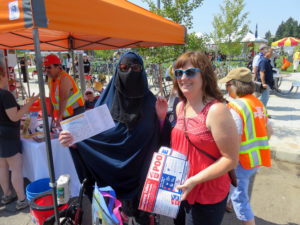
PBEM’s Laura Hall, right, explained the twin bucket system to Layla Assem of East Portland. CREDIT: TOM BANSE
In Washington state, Pacific County and Grays Harbor Emergency Management independently featured disaster sanitation tips in newsletters this spring, partly inspired by the visit from the Japanese experts.
“One of events that we are going to be holding soon is a bucket decorating party,” said Justin Ross, a Multnomah County Emergency Management outreach specialist. “We’re going to hold a space where people can come and paint them and put decals that we have on them to kind of make it fun.”
Ross urged the metro area’s residents to get ready to live without a working toilet for weeks or months after a strong earthquake.
“We want to make sure that people know this is a big piece of emergency preparedness,” Ross said in an interview at the country offices in Portland. “It’s something that could be almost free to do. It’s accessible for anybody.”
The poo plan experts continue to meet in the Portland area to fine tune what happens to all the bags of poop earthquake survivors will accumulate. Those poo bags will need to be collected eventually — and that’s not a job for your average garbage hauler.
“I wish we had all the answers and we don’t yet, but we’re working on it,” said Mohnkern. “This is outside everybody’s experience.”
The twin bucket system is mostly geared at people in urban areas, particularly apartment dwellers and townhouse owners. Rural residents on septic systems may be relatively well off after a major earthquake, provided their buried septic tank and drain field connections survive the shaking.
“If you have a septic system, make sure it works,” Mohnkern said. “If it works, you are golden. You can probably charge admission.”
Digging a latrine or a pit toilet could be an option for people with big yards. Instructions from the Emergency Toilet Project specify that the spot should be at least 10 feet from the property line and 100 feet from any stream or water source.
The twin bucket system, which may be the best option for the majority of the population, was new to most of the passersby who stopped at PBEM’s festival booth in mid-August. But a few people said their earthquake preparedness already included a poo plan.
“We’ve taken steps to cache, you know, food, water, medicine, lights and this is part of it,” said Michael Hevron who lives in Portland’s western suburbs.
Hevron said he bought a camp toilet at REI to be prepared for the Big One. Snap-on toilet lids that fit on five-gallon buckets or complete kits can also be readily found online. A brand called Luggable Loo that is a widely stocked option for answering nature’s call costs less than $20.
——–
If you want to go (to learn more, we mean), the twin bucket system will be displayed at upcoming September events in the Portland area.
What: Quake Up! earthquake preparedness event
When: 11:00 a.m.-5 p.m., September 8, 2018
Where: Tigard Street Fair, Main Street from SW Maplewood Dr. to SW Commercial Street in downtown Tigard
What: PBEM booth @ the Belmont Street Fair
When: 10 a.m.-6 p.m., September 8, 2018
Where: SE Belmont Street between SE 33rd and SE 39th, Portland
What: Emergency Management Prepare Fair
When: 8 a.m.-3 p.m., September 15, 2018
Where: Columbia City Elementary School, 2000 Second Street, Columbia City
What: PBEM booth @ Sunday Parkways NE Portland
When: 11 a.m.-4 p.m., September 23, 2018
Where: Woodlawn, Alberta or Fernhill Parks, Northeast Portland
Copyright 2018 Northwest News Network
Related Stories:
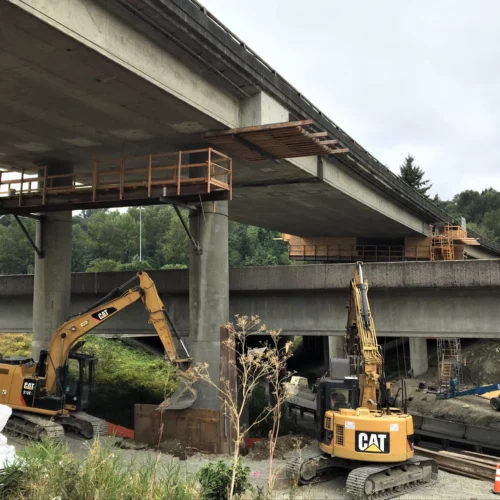
Some freeways may be useable following ‘the Big One’ per new modeling by UW
New modeling by the University of Washington of the impacts of a major Cascadia earthquake offers a less dire picture of the aftermath of the so-called “Big One” — specifically when it comes to highway bridges.

Concert in Pasco To Raise Disaster Relief Funds For Colima in Mexico
The Mid-Columbia Symphony will perform a public concert this September 24th in Pasco at 6:00 p.m. Photo from Mike Gonzalez reports website. Listen (Runtime 0:53) Read A symphonic concert will
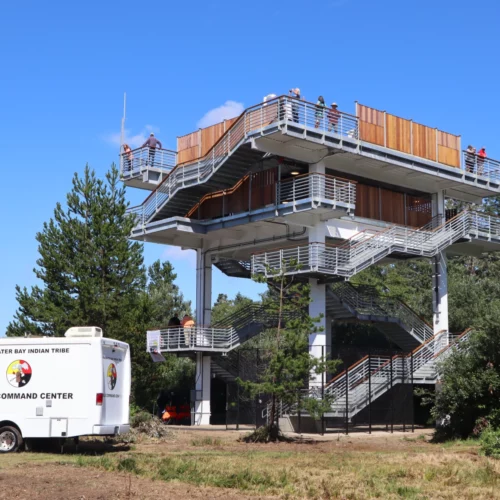
Coastal Washington Tribe Creates Higher Ground By Building Tsunami Tower, First Of Its Type Here
There is a new option to escape a tsunami if you’re on the southwest coast of Washington when the Big One strikes. The Shoalwater Bay Indian Tribe on Friday dedicated a 50-foot tall evacuation tower in Tokeland, Washington. Tribal leaders and the Federal Emergency Management Agency said the new tsunami refuge platform should be an example and inspiration for other vulnerable coastal communities.















